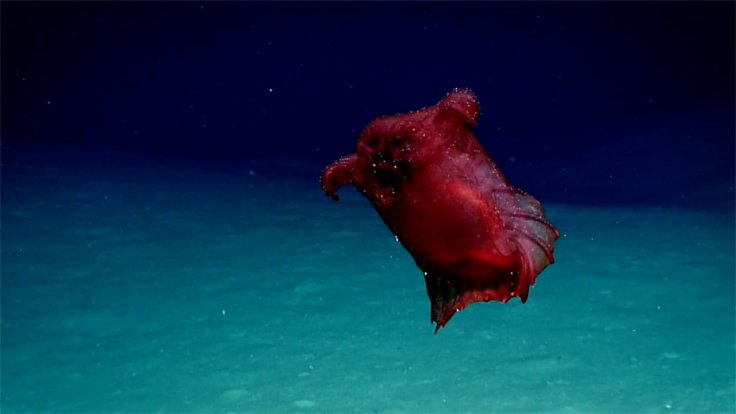
Our oceans have many creatures, which are yet to be discovered. Recently researchers have spotted one mysterious sea animal and called it, 'headless chicken monster,' due to its physical appearance.
The Australian Antarctic Division (AAD) underwater cameras filmed this unusual creature in the depths of the Southern Ocean. AAD research scientist Dirk Welsford said that this deep-sea sea cucumber Enypniastes eximia, also named as 'headless chicken monster,' was found floating 3 kilometres below the surface, off Heard Island.
Most of the sea cucumbers are usually unable to swim, but the team witnessed that the bright purple headless chicken monster not only roaming inside the deep ocean but also searching for foods on the sea floor.
Dr Welsford said that it was a real surprise for the team as they never seen such marine creature before and none of the research team members knew what it was, so "we did what a lot of scientists do and googled it."
"It's one of the most spectacular specimens I've ever seen. It's quite charismatic the way it flies past the camera ... and quite unusual that it can swim," he said.
Prior to this discovery, last year in the Gulf of Mexico this plankton-eating organism, also known as Spanish dancer, which has a bat like wings and a size of a basketball was caught on camera.
While explaining the reason behind the name of this rare sea organism, Dr Welsford said "It does look a little bit chicken shaped ... and it's a cool name. It's also a reflection of how little we know about the deep sea and the strange things we see while doing studies down there," adding that "There are almost certainly many, many more things that we don't know down there, waiting to be discovered."
Underwater camera technology helping to explore deep sea creatures

These cameras are similar to smartphone cameras, but the only difference is these are secured in the case that will protect it from the water pressure and sub-zero temperature. Dr Welsford said this technology is actually helping ADD to explore the Southern Ocean. He also hoped that the use of such cameras would help the marine researchers to understand the diversity, number and location of such creatures inside the deepest sections of the ocean.
"Because [the technology] is now so portable and so cheap, we're hoping to put cameras on nearly every fishing boat that goes down south, so we can rapidly get a lot of data on what's going on down there, in a way we've never been able to before," he added.
The Southern Ocean, which covers an area of 20.33 million km is the home of most of the marine animals and the researcher believes that like the ''headless chicken monster' there will be "many mysteries in the deep ocean that we're only just starting to scratch the surface of."
However, the data gathered by the underwater camera will be presented during the annual Commission for the Conservation of Antarctic Marine Living Resources meeting, which will take place in Hobart on Monday, October 22.









